Oh no! You’re the costume director for your semi-local Book of Mormon-themed pageant and you are in charge of producing costumes for a civilization that supposedly disappeared or degenerated into perpetual near-nudity a millennia-and-a-half ago! To add onto all of this, there are no known and widely recognized archaeological pointers to orient you, and no one has any idea what Nephites or Lamanite clothing could have possibly looked like! Well, have no fear. With this post, we will uncover secrets only known to Book of Mormon artists, so that you can have the most authentic Nephite costume of them all! In this post, we’ll focus primarily on Nephite clothing, and in the following post, we will discuss all other –ites.
Nephite
There is one accessory alone that is commonly seen among all portrayals of Nephites, no matter the artist, making it one of the most defining items of the Nephite wardrobe. In order to introduce this accessory, we have to start with a little history. Lehi and his family left Jerusalem in about 600 B.C. and crossed an ocean to arrive somewhere in the Americas.
As you can see in this picture, while Lehi was a big fan of the Arafat-style sun hat, Nephi is quite obviously a fan of what I will dub the Incredibly Useless Headband. I established in my first Rational Faiths piece, Mormons and Mullets,, that Nephi had an immaculate Ape Drape.
A mullet, as observed in this picture, is rather short and cropped on top and long in back. Headbands are typically to keep a person’s hair out of their face. A mullet makes this object completely unnecessary. Therefore, we can credit Nephi for introducing what was the equivalent of the now prevalent waist belt into the Nephite culture.
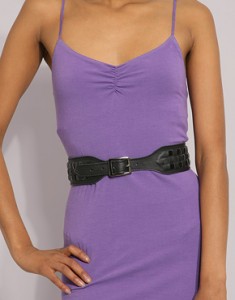
Not keeping anything up, or keeping anything out of the way. Not doing anything, really. Just…hanging there.
Edit: My wife informed me that the waist belt creates a “slimming” effect. I guess Nephi was trying to slim down his own head.
The headband is seen on numerous occasions throughout Book of Mormon art, and it is often times equally as useless, if not more useless, than Nephi’s. Because it appears so frequently in church art, and I don’t have the time to look into each one, here is a small headband collage I made in Microsoft Paint.
These are only a few of the hundreds of headbands that appear throughout church art. I made sure to include only the most unnecessary headbands in this particular collage.
From all of these renditions we can ascertain that the headband was, perhaps, the equivalent of the white shirt and tie of our day. Why else would prophets don it so proudly? Why else would Nephites find it appropriate to wear in the presence of the Savior, Jesus Christ?
It almost seems like the more useless the headband, the more spiritual the individual. Take the Nephi from the book of Helaman, for example.
Apparently, wearing thin pieces of rope that hover above the temples and look like lobotomy scars from afar may have been the thing in his time. Maybe when he received the sealing power, it was given him in the form of a mystical, twine-thin headband, much like Captain Planet’s Planeteers and their rings. Either way, I hope to one day be worthy enough to don a headband.
Nephite fashion seems to be a mixed bag. Artists can’t seem to decide on what else Nephites could have worn. So, if you’d like to dress like a Nephite, it looks like you’re in luck, because you can wear anything-
a shower curtain,
A kimono,
a toga,
a McDonald’s themed cape,
, a miniskirt,
scuba diving gear…
Really, put on anything. Just don’t forget your headband.



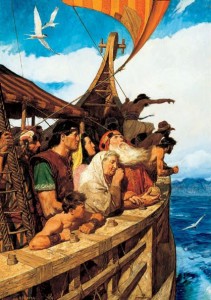
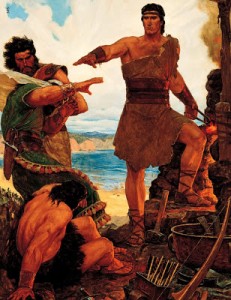
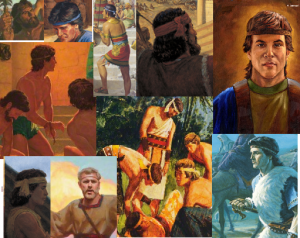
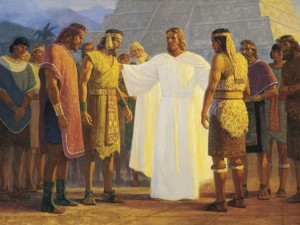
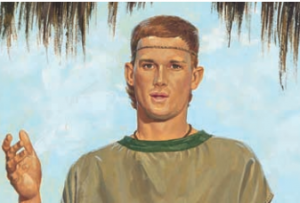
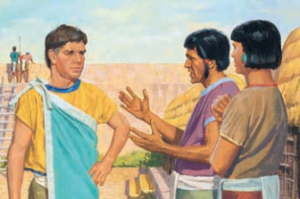
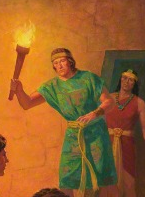
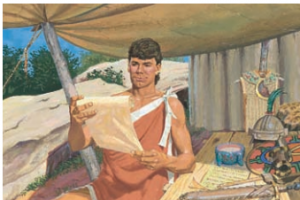
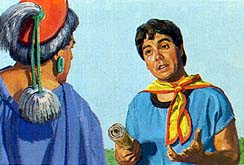
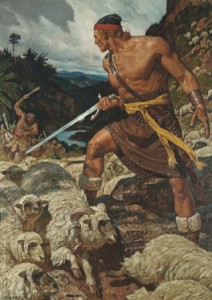
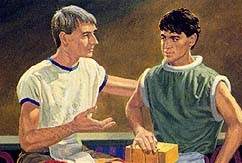



Ha! I’ve been waiting for another installment of this!
Sadly, I think the headband love comes from the Hollywood version of the fashions of Native Americans. If you watch the documentary “Reel Injun” (highly recommend it), you’ll learn that the popular Indian in a headband look of most old westerns was perpetuated as a practicality, not out of any attempt at authenticity. The actors’ wigs kept falling off, so they introduced the headbands to keep them on during action sequences and other scenes.
So interesting!!!
Cool! TIL.
I found it interesting that one of the more creative painters when it comes to Nephite clothing is Minerva Teichert. First of all, she didn’t pump the men up with steroids like so many of the illustrators do. She definitely had a thing for headbands! (She always wore one herself, even!)
I would recommend doing an article on those odd metal/leather cuffs that can often be seen on illustrations of Nephites and Lamanites. They also seem to have no function other than making the kimonos/togas/miniskirts look more butch.
One of my earliest memories of questioning the portrayal of Nephite clothing was on a visit to the Washington DC temple visitors center. In it was a diorama of Nephi. He was wearing an odd tunic thing made of brownish tan and turquoise felt. The turquoise triangles of felt that had been glued to the mid-calf hem as some kind of decoration had fallen off, or were peeling here and there.
Okay I have one bone to pick. Headbands and doo rags were popular in the 80s 1. to “look cool” and 2. to keep sweat of your brow so it doesn’t drip into your eyes. People in the 80’s would wear “sweat bands” while exercising for that very purpose. Though, I can’t for the life of me figure out what the purpose of “leg warmers” for workouts were. Don’t know why you would want to add more fabric to your already sweaty body.
http://www.urbandictionary.com/define.php?term=doo%20rag
http://store.haloheadband.com/
Long story short, the headband was probably not useless. 😛
This is great. It makes me feel less guilty for making snarky comments on the “Meso-American” fashion and culture every time I watch The Testaments.
LDS Art suffers from the same malady as LDS music. The first ones to do it set the standard that everyone else mimicked for the rest of eternity.
My daughter pointed out that the wrap-around skirt/t-shirt combination for the Nephites in BoM Stories looks a lot the ancient Egyptian style of dress.
Maybe we should name the style “Reformed Egyptian”? 🙂
🙂
Mormon Art is a great reason for a revival of Abstract Expressionism. Or more to the point, putting it in context with Mormon Culture’s ability to be 60 years behind the times, maybe we should just hope for a first-time go-round of Mormon Abstract Expressionism.